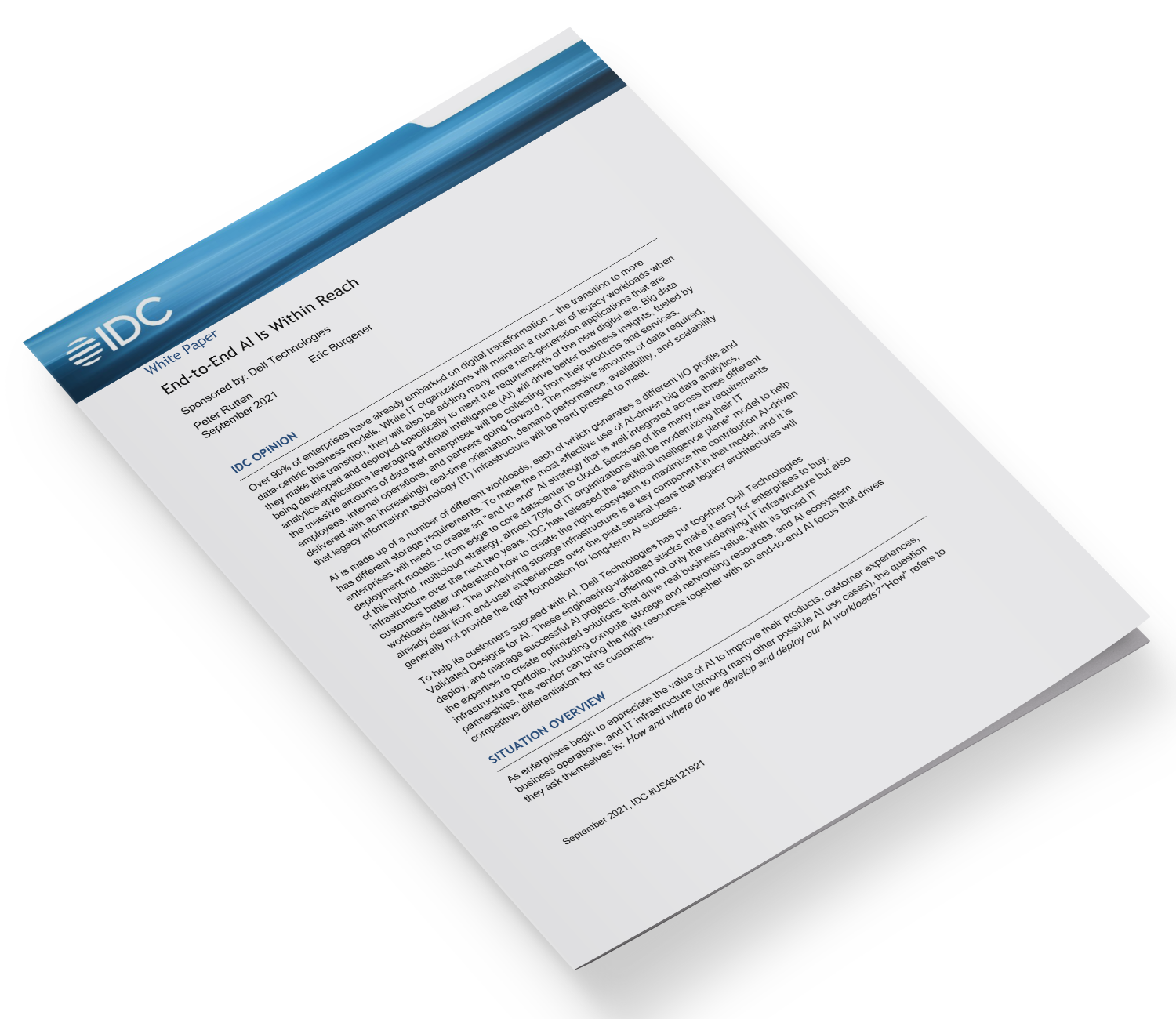IDC Opinion
Over 90% of enterprises have already embarked on digital transformation — the transition to more data-centric business models. While IT organizations will maintain some legacy workloads when they make this transition, they will also be adding many more next-generation applications that are being developed and deployed specifically to meet the requirements of the new digital era. Big data analytics applications leveraging artificial intelligence (AI) will drive better business insights, fueled by the massive amounts of data that enterprises will be collecting from their products and services, employees, internal operations, and partners going forward. The massive amounts of data required, delivered with an increasingly real-time orientation, demand performance, availability, and scalability that legacy information technology (IT) infrastructure will be hard pressed to meet.
AI is made up of several different workloads, each of which generates a different I/O profile and has different storage requirements. To make the most effective use of AI-driven big data analytics, enterprises will need to create an “end to end” AI strategy that is well integrated across three different deployment models — from edge to core datacenter to cloud. Because of the many new requirements of this hybrid, multicloud strategy, almost 70% of IT organizations will be modernizing their IT infrastructure over the next two years. IDC has released the “artificial intelligence plane” model to help customers better understand how to create the right ecosystem to maximize the contribution AI-driven workloads deliver. The underlying storage infrastructure is a key component in that model, and it is already clear from end-user experiences over the past several years that legacy architectures will generally not provide the right foundation for long-term AI success.
To help its customers succeed with AI, Dell Technologies has put together Dell Technologies Validated Designs for AI. These engineering-validated stacks make it easy for enterprises to buy, deploy, and manage successful AI projects, offering not only the underlying IT infrastructure but also the expertise to create optimized solutions that drive real business value. With its broad IT infrastructure portfolio, including compute, storage and networking resources, and AI ecosystem partnerships, the vendor can bring the right resources together with an end-to-end AI focus that drives competitive differentiation for its customers.


